The eager beaver in any household, the kitchen sink leads a very active lifestyle. From food preparation workflows to cleaning chores, your kitchen sink is fiendishly a useful feature, without which you simply cannot go a single day. Apart from being functional, your sink should mix well with an overall kitchen style and, truth be told, it eminently must reflect your unique taste.
The marvels of the interior design science, kitchen sinks have never been more versatile. They are produced in all sorts of shapes, dimensions, and materials, while their configurations are ever-evolving with cutting boards, trays, drainboards, colanders, and other copacetic perks being attached to the main structure. Types of kitchen sinks are surprisingly numerous, but there is a handful of all-time classic designs, which are loved and appreciated by most homeowners. Here is your portion of inspiration to take for your kitchen sink upgrade.
TOP MOUNT KITCHEN SINK
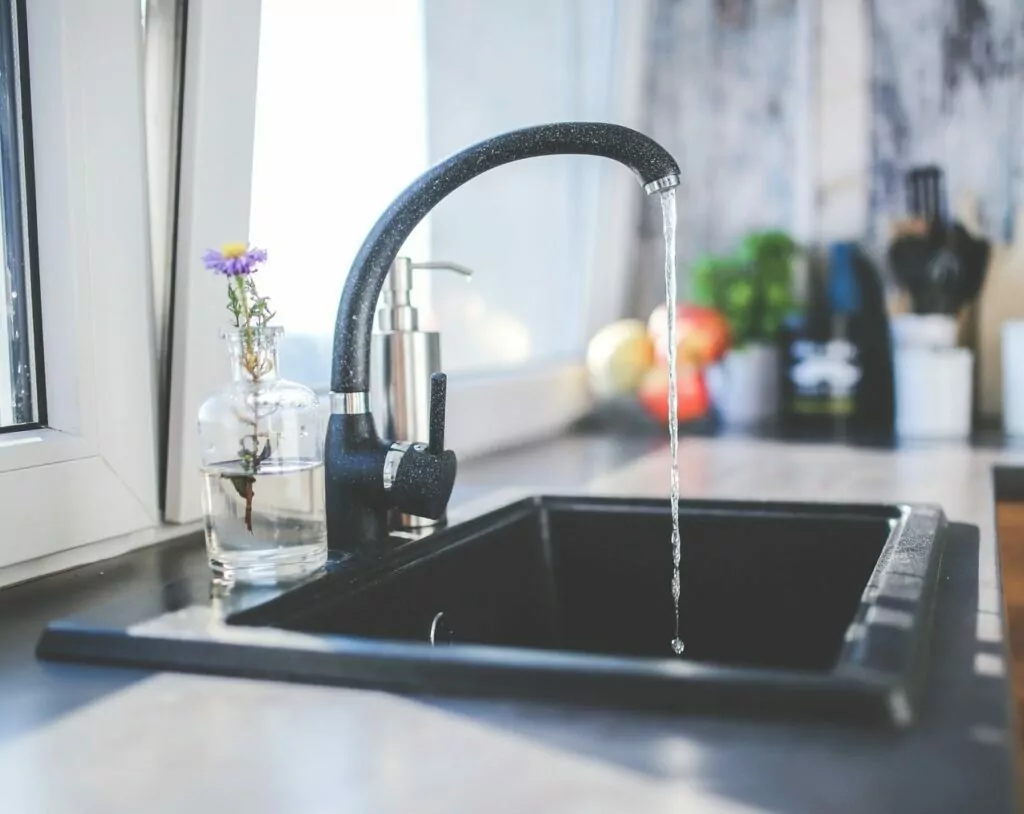
Also dubbed drop-in, top mount kitchen sinks are inserted into the hole of a countertop and are carried by a rim extending above the counter surface. This surrounding rim not only holds the sink bowl in place, but creates a harmonious look of the whole construction.
Top mount kitchen sinks are extremely durable (because they are generally made of stainless steel), affordable, and are painless to install, too, which makes them one of the most preferred options. Thanks to the rim, drop-in sinks do not need any internal support beneath the counter, which is why such a model is great for DIY installations or budget-tight kitchen renovations.
Nevertheless, some homeowners opt out of this variant because the rim acts as a barrier, preventing the splashes and remnants from immediate getting into the canalization. And this added rim makes even more space which you need to take care of, i.e. maintain.
Perfectionism-minded individuals also dislike top mount kitchen sinks because of the visible divider between a washbasin and a counter.
UNDERMOUNT KITCHEN SINK
As the name suggests, undermount sinks are attached beneath the counter with the help of special fixing clamps.
As opposed to top-mount variations, undermount models do not have any rim around them, and the edge of countertop seamlessly transits into the bowl.
Not only this design is aesthetically appealing and offers a modern look, but it also turns cleaning into a breeze because there are no clefts and grooves where water and debris can accumulate.
Though there are stainless-steel templates available too, undermount kitchen sinks are frequently made of elite materials such as cast iron, fireclay, granite, marble. But whatever the material, this sink design always looks gorgeous, and is easy to keep clean, due to the absence of a surrounding rim. However, this model might give you a rough time in the first instance.
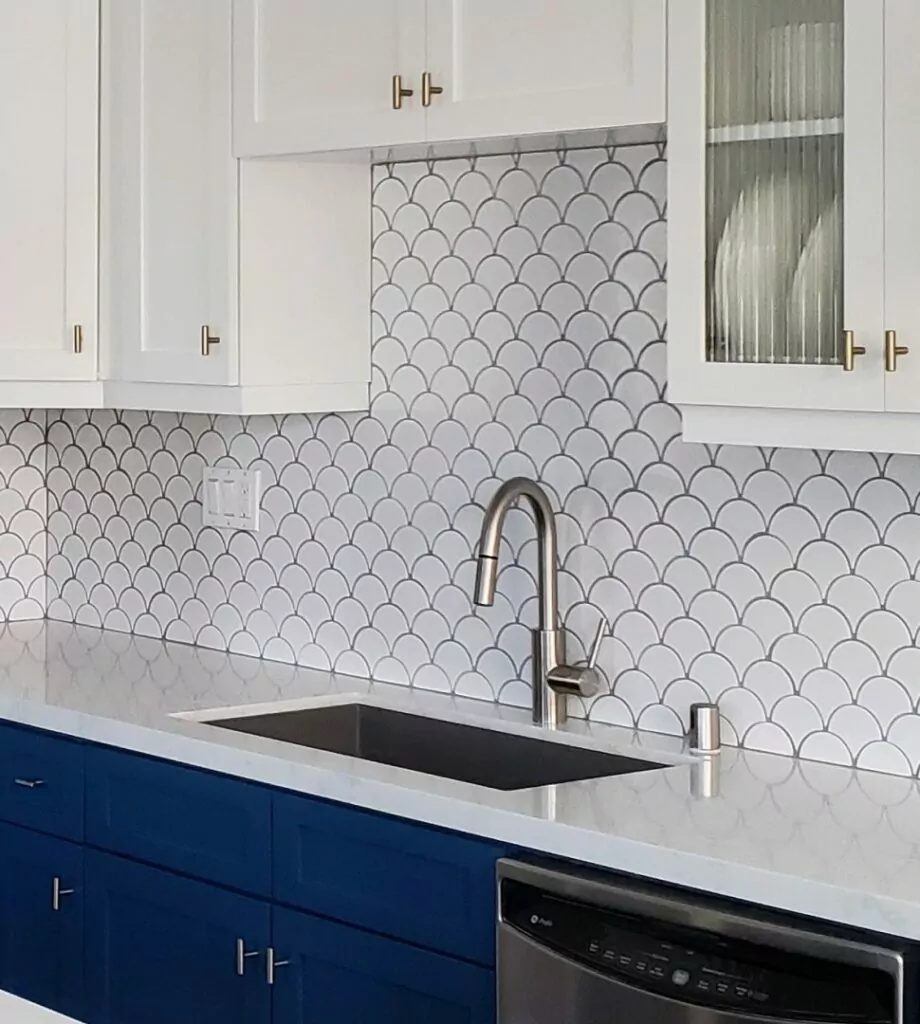
Undermount sinks require more labor for installation, because the bowl must the properly fixed to the bottom of the counter, which involves not only the application of professional joint glue but the construction of internal supports to ensure the stability of an undermount sink.
FARMHOUSE SINK
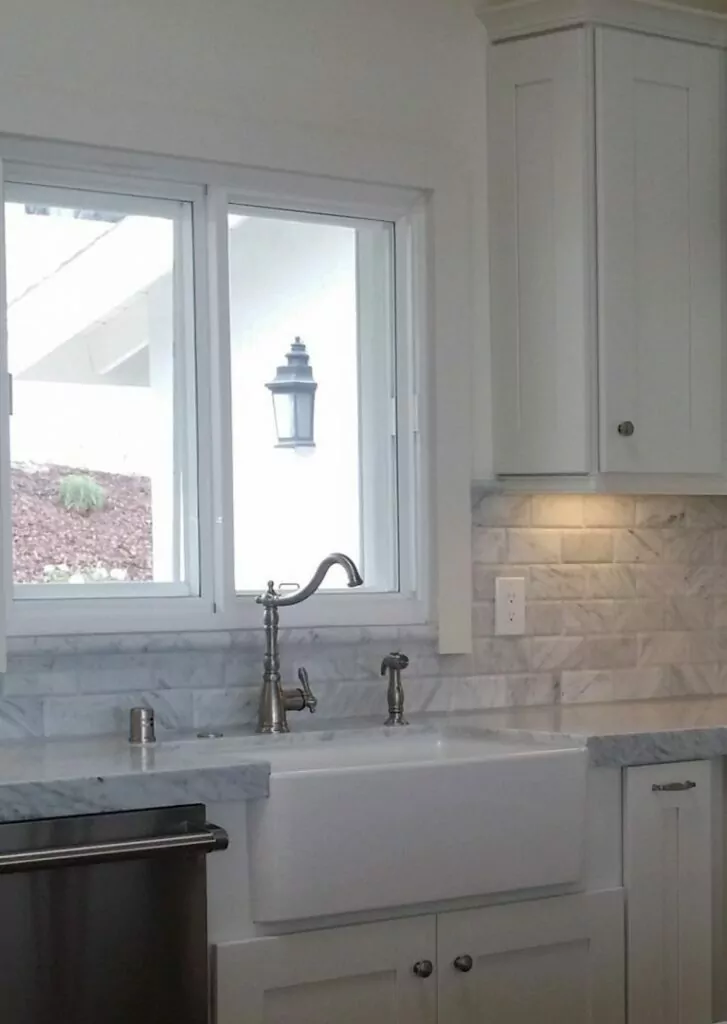
Often nicknamed as apron-front sinks, farmhouse sinks are meant to be seen: they are generous in size and beautiful in appearance. This type of sink is compared to the apron owing to somewhat physical resemblance: when the sink is integrated, its front panel gets slightly protruding and becomes dramatically visible, which creates the feeling of an apron aloft the countertop.
A prominent feature of a farmhouse sink is a deep bowl that prevents intensive water splashing and allows more space for cleaning/washing/cooking needs. It is very convenient because with wider dimensions of an apron sink, you will no longer pile dirty kitchenware on the countertops but, instead, will instantly hide it out of eyesight.
Farmhouse sinks are commonly made of fireclay or cast iron and offered in many styles ranging from rustic and Provence to transitional and contemporary. But with their high-end appeal, apron sinks have one significant drawback behind: they are quite fussy to install.
This process will involve a difficult cut of the countertop and the cabinet to achieve this alluring protuberance of the sink’s front face. For this reason, farmhouse sinks are not a very good option for do-it-yourselfers.
BAR SINK
Also referred to prep sinks, bar sinks do strike the balance between the minuteness and functionality. These sanitary appliances are typically installed in wet bars, patios, terraces, and in tiny kitchens with low sink usage. However, in spacious kitchens, where entertainments, parties, and noisy gatherings with an abundance of prepared food and drinks are a common thing, bar sinks can be very handy too, making a reasonable supplement to the primary sink.
Bar sinks rarely occur in the diameter greater than 15 inches and always have a single basin, but still, they offer a sufficient depth for cooking operations, drink-making, and quick cleanup. As for the installation type, they can be undermount, drop-in, apron or standing alone, while their forms, materials, and colors run the gamut.

Prep/bar sinks are generally made of stainless steel, nickel, copper, cast iron, granite composite, brass or fireclay. Whatever the implementation, a bar sink is the right way to enhance your kitchen functionality.
CORNER KITCHEN SINK
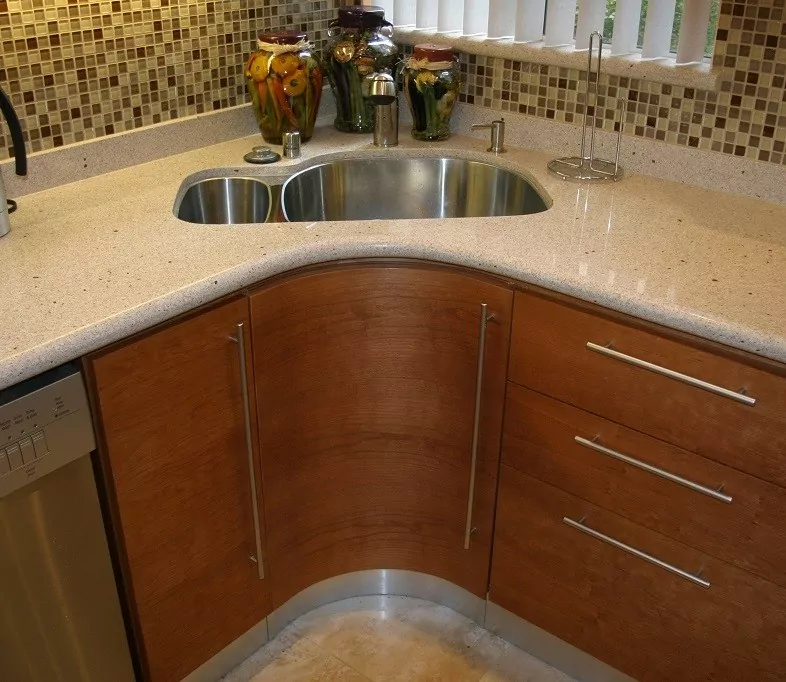
Counter corners are dead space wasters – they do occupy valuable space without bringing a bit of utility. But a corner kitchen sink may help you make the most of your counter corners. This design often, but not obligatory, involves double bowls which are integrated into the counter in a cater-corner manner.
Very often, two basins of a corner kitchen sink are placed at some distance from each other. It provides for an additional section in between that can used as a drying area or a cutting board, which ultimately maximizes the counter space. Despite a messy installation with intricate counter cuts, corner sinks are welcomed and widely-adopted thanks to their functionality and visual prettiness.
If you are an owner of a tight kitchen, a corner sink may be quite a solution because this model can free up floor space, hence letting several individuals do kitchen chores at one time. Since a kitchen sink entails a stationary type of work, corner disposition of a kitchen sink allows more space for another person to move around without clashing with each other.
DOUBLE KITCHEN SINK
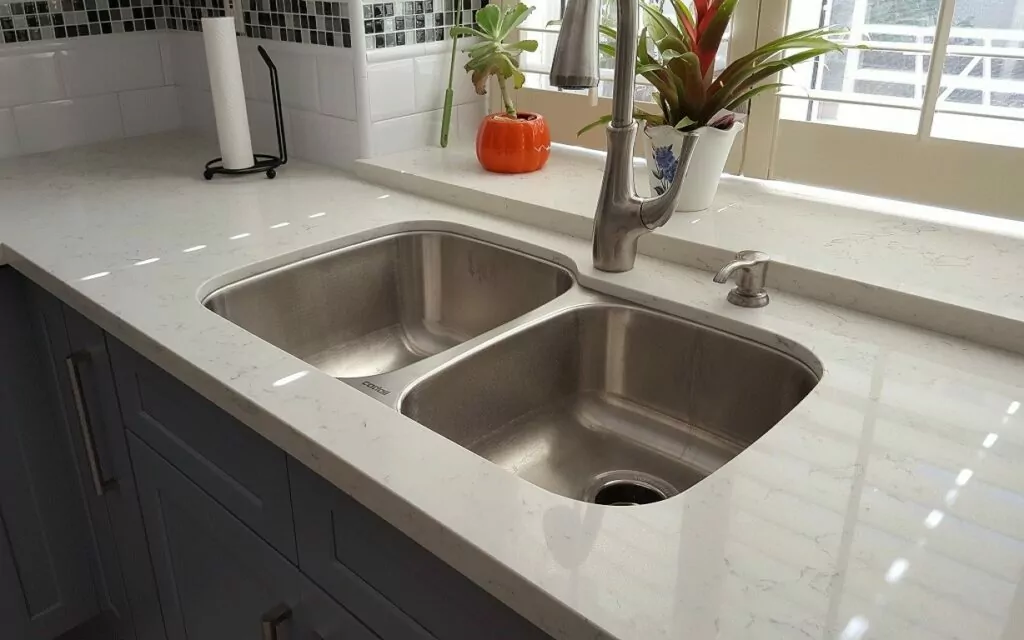
Double kitchen sinks are rapidly winning overall recognition due to the flexibility this arrangement affords. Two-basin sinks are produced in all configurations imaginable, and you will easily find two equally-sized basins of the same or mixed depths, unequally sized basins, or even basins of different shapes.
An intersection between attractiveness and functionality, dual-bowl kitchen sinks are a true beauty. They are equally good for food preparation and dishwashing and enable you to complete kitchen tasks in record time. But if two washbasins are not enough to cover all your prep/cleansing needs, there are even triple kitchen sinks with a middle compartment in between that can be applied for holding things while you do the washing on the one side and draining the dishes– on the other.
For extra-demanding users, there even exist low-dividerdouble kitchen sinks where a partition-wall between the two bowls does not rise to the level of the sink top, but, instead, runs at the half of that height.
Such an approach bridges the gap between single-bowl and dual-bowl designs. When one side is filled with water halfway, the whole appliance will work as a dual sink. But when you need extra space to wash bulky pans and casseroles, filling the water higher and letting it overflow the divider reveals the advantage of a single sink.
Double kitchen sinks differ in more than one way: they come in all sorts of installation types, materials, colors, and shapes depending on the manufacturer, designer or specific requirements of an end-user. But whatever the realization, twin sinks always look stunning.
KITCHEN SINK WITH DRAINBOARD
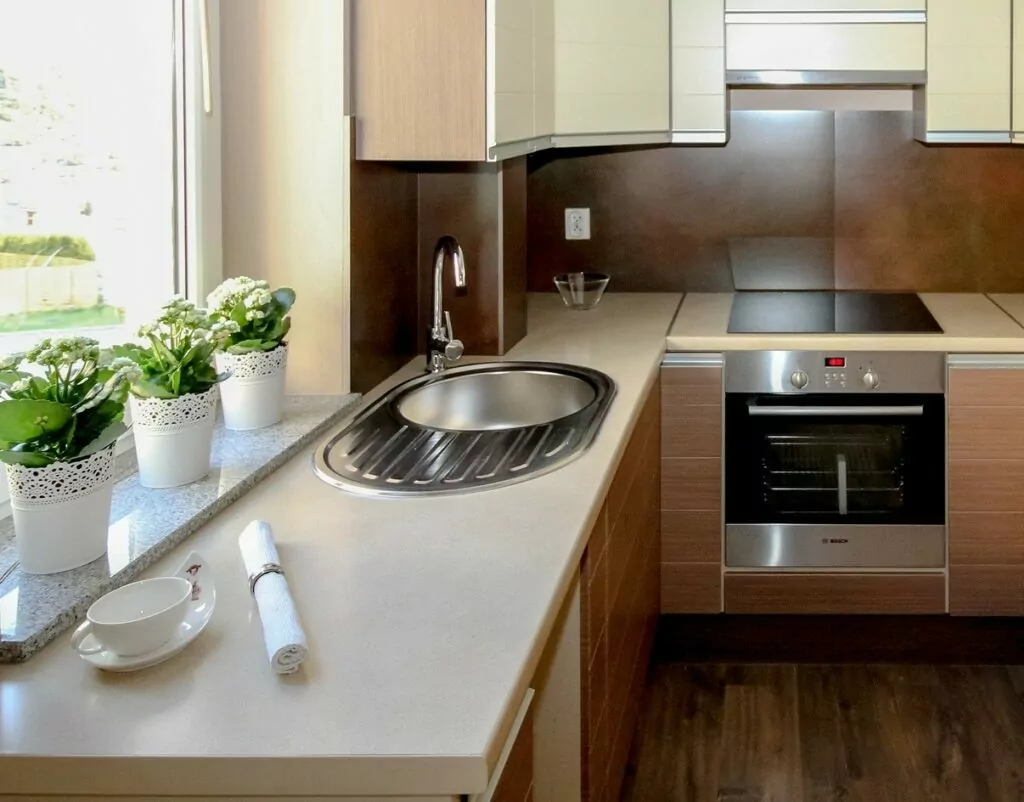
Featuring a wash bowel on one side and a built-in counter-level dish rack from another, sinks with drainboard do a good job at keeping kitchen countertops clean and sheen. The drainboard presents some kind of panel overlapping a part of the counter. This panel has a grooved surface and is subtly angled down, which lets water streaks freely cascade into the basin.
Most kitchen sinks with drainboards are drop-in, but undermount variations are not an extreme rarity as well. As for the material, they are typically made of stainless steel, ceramic, acryl, fireclay, iron cast. The size range is also ample: there are both compact, shallow mini-units tailored to galley kitchens and large, prestige models for high-end residences and restaurants with diversified mid-range options in between.
Although dishwashers save us tons of time and efforts, they do devastate our wallets because of their abnormal consumption of electricity. This is where kitchen sinks with drainboards make a sense
With a neat and functional spot at your fingertips to set wet kitchenware, you will significantly reduce the usage of your dishwashing machine and optimize your utility bills. Drainboard sinks are also great for those who love cooking: such a model adds a designated food preparation area to your counter, therefore, increasing its functionality.
For extra-demanding users, there even exist low-divider double kitchen sinks where a partition-wall between the two bowls does not rise to the level of the sink top, but, instead, runs at the half of that height. Such an approach bridges the gap between single-bowl and dual-bowl designs. When one side is filled with water halfway, the whole appliance will work as a dual sink. But when you need extra space to wash bulky pans and casseroles, filling the water higher and letting it overflow the divider reveals the advantage of a single sink.
Having plenty of choices is not always good because it hobbles decision-making. There are no good or bad kitchen sinks – it is only a matter of preference. Always think of your cooking habits, cleansing needs, kitchen layout/space/style and, surely, budget before going to a store for a new kitchen sink – this will help you make the right choice.
Turning to the Groysman Construction Remodeling Company, the experts will help you implement the best solutions.

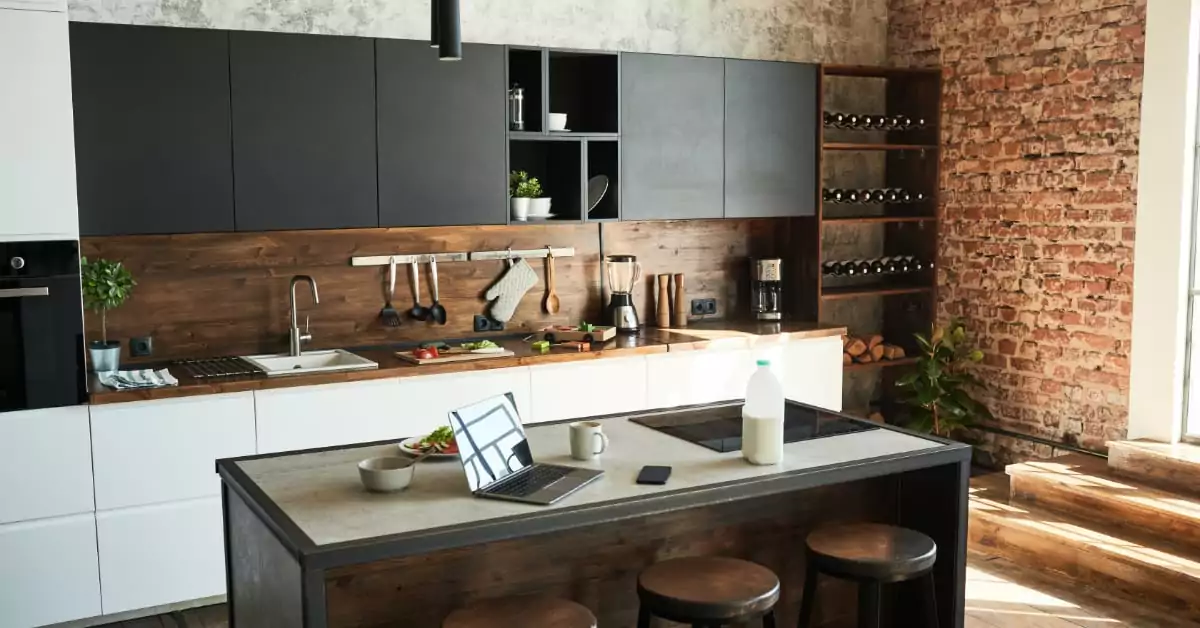
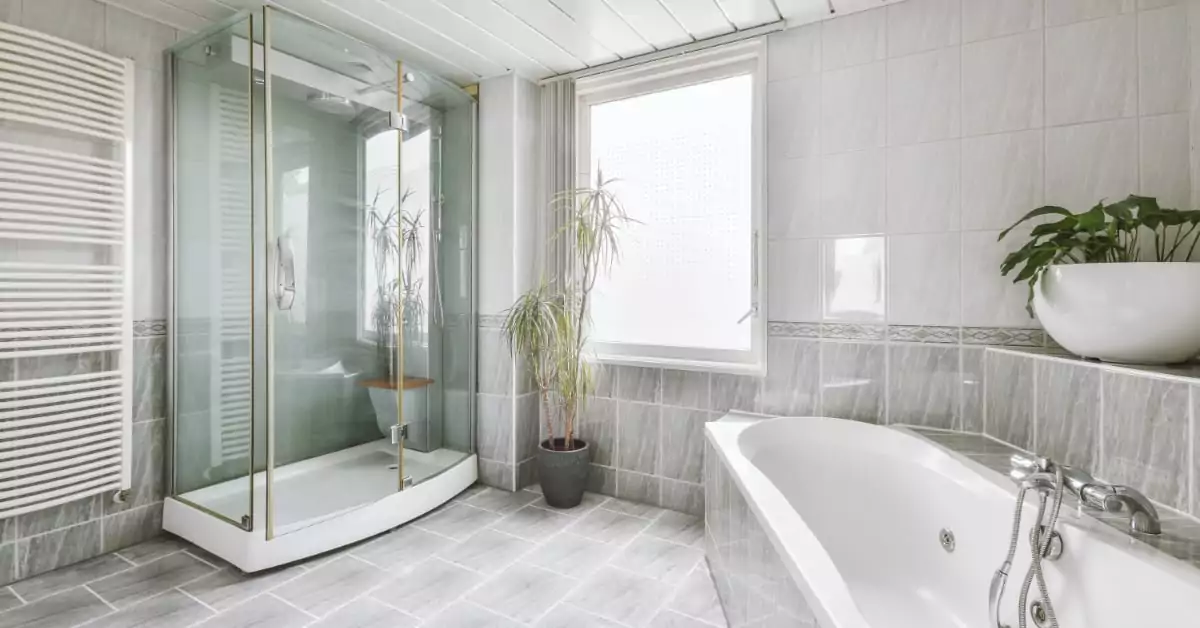


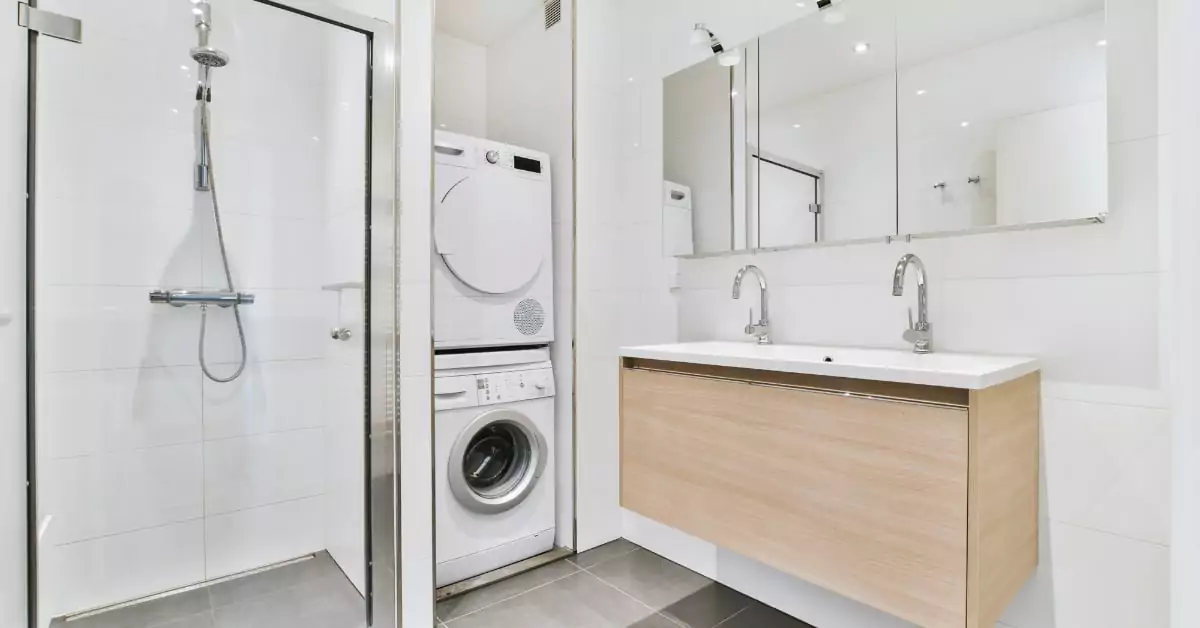

My sink looks so out of place compared to the rest of the kitchen since I had given it a makeover recently, so I was thinking of having it replaced with a new one soon to avoid making it stick out negatively. I’m grateful you recommended that we go for undermount kitchen sinks if we want something that looks more modern while also making cleaning a breeze with no debris accumulating. I’ll take note of this while I look for a remodeling contractor to hire for my new sink installation soon.